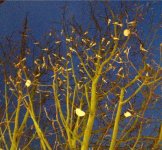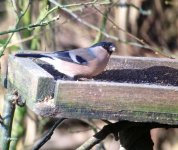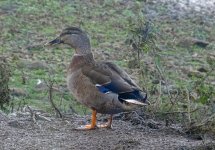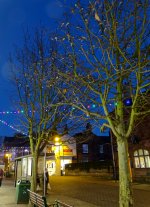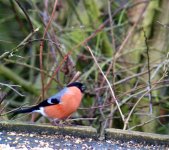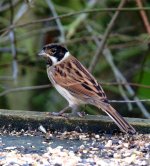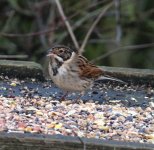Finally read the ring on the Greater Pecker female that feeds in the garden and nests opposite us.
They told me they rely heavily on re traps and dead birds so were interested to see how we did this - pieced together over many quick views, wishing it would sit still, through a 60x scope! Not easy.....
03 December 2014
Dear Daniel Martin
Thank you for taking the time to report to us details of a bird ring you found. Information about this bird and its movements is given below.
Ringing Scheme: London Ring Number: LC39103 Species of bird: Great Spotted Woodpecker (Dendrocopos major)
This bird was ringed by J M McMeeking as age 1st year, sex unknown on 25-Aug-2010 18:00:00 at Darlton, Nottinghamshire, UK
OS Map reference SK7773 accuracy 0, co-ordinates 53deg 15min N 0deg 51min W accuracy 2.
It was found on 23-Oct-2014 time unknown at Belper, Derbyshire, UK
OS Map reference SK3548 accuracy 0, co-ordinates 53deg 2min N 1deg 29min W accuracy 0.
Finding condition: Sight record by non-ringer
Finding circumstances: Field Record
Extra Information: Reported as LC3910_
It was found 1520 days after it was ringed, 49 km from the ringing site, direction WSW.
Bird Ringing in Britain & Ireland is organised by the British Trust for Ornithology (BTO). Each year over 900,000 birds are ringed by over 2,500 highly trained bird ringers, most of whom are volunteers. They follow a careful training process that can take several years to complete to ensure that they have the necessary skills to catch and ring birds. The bird’s welfare is always the most important consideration during ringing activities.
Ringing began over 100 years ago to study the movements of birds. While it continues to generate information about movements, it also allows us to study how many young birds leave the nest and survive to breed as adults, as well as how many adults live from year to year and how many birds disperse to different breeding sites. Collection of this information helps us to understand why bird populations increase or decrease − vital information for conservation. Details of how many birds have been caught and where and when they have been found are available on the BTO website at
www.bto.org/ringing-report.
Some interesting facts discovered from ringing data....
Oldest bird – Manx shearwater, 50 yrs 11 months
Furthest travelled – Arctic Tern from Wales to Australia 18,000 km
Strangest recovery – Osprey ring found in stomach of a crocodile in The Gambia!
Many thanks again for reporting this bird and contributing to the work of the Ringing Scheme. If you would like to find out more about the BTO please check out our website
www.bto.org.
With best wishes
The Ringing Team
Reference 11112014SAS
BTO, The Nunnery, Thetford, Norfolk IP24 2PU. Tel 01842 750050 e:
[email protected] w:
www.bto.org/ringing
Registered Charity No 216652 (England & Wales, SC039193 (Scotland)Registered in England and Wales No 357284
Please note that the name and address of finders reporting ringed birds will be stored in computerised databases. Please
tell us if you do not wish your name and address to be included. The data controller is the Director of Services of the BTO.
Download as .html file




